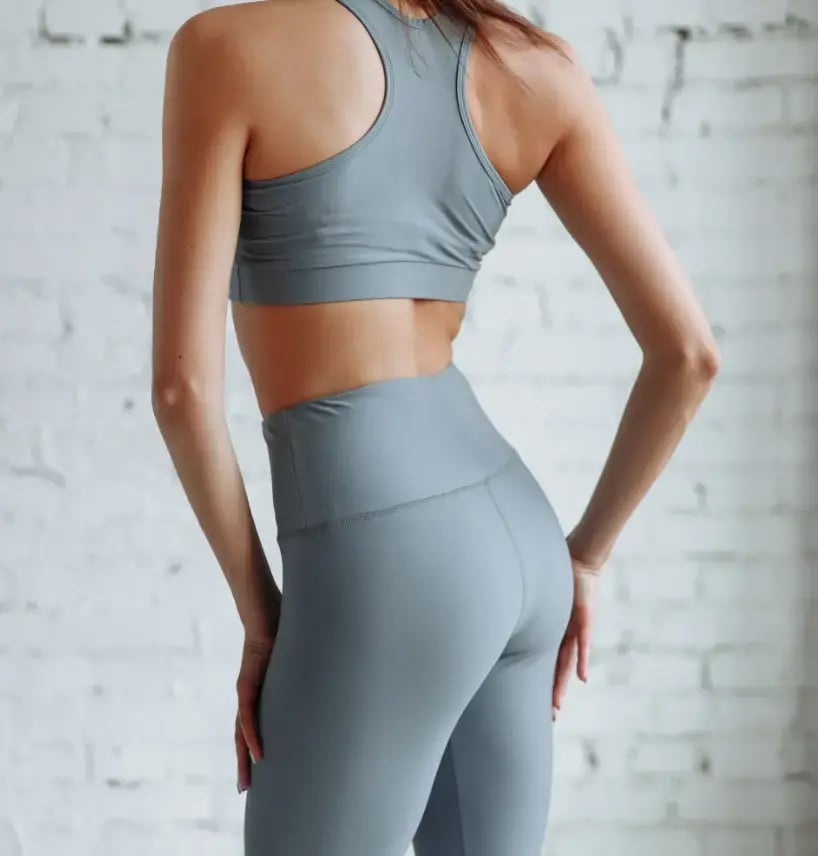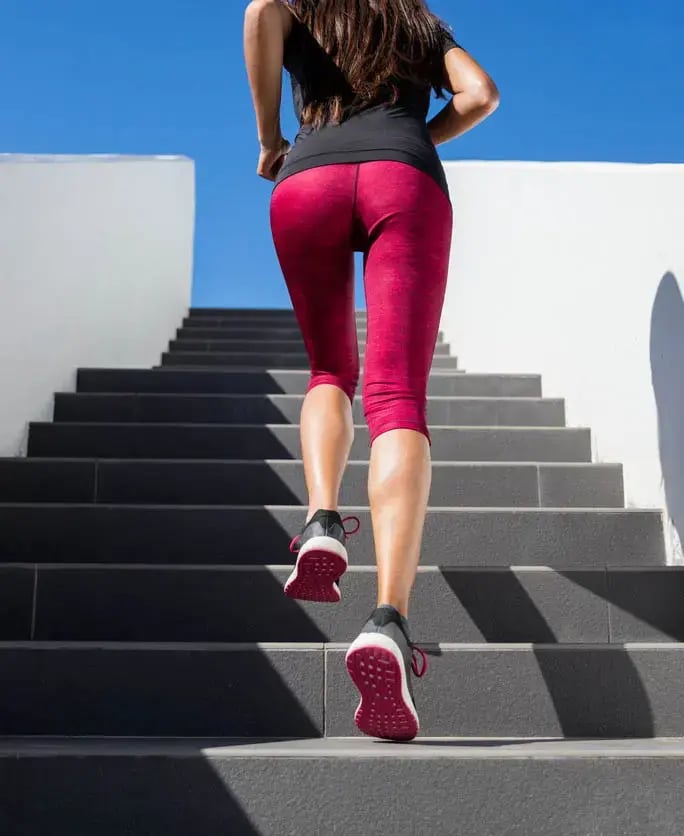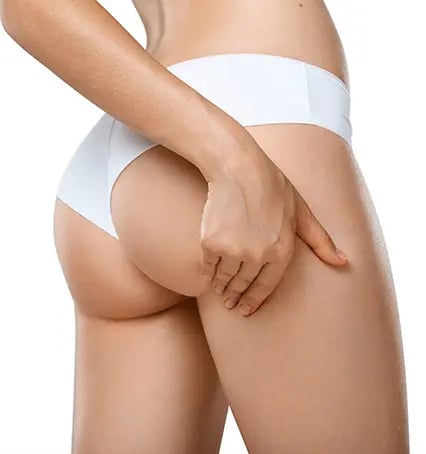How to Fix Flat Butt?
Enhancing a Flat Butt: Tips and Techniques
If you're looking to enhance and tone your buttocks, there are several exercises and lifestyle changes you can incorporate to help build muscle and improve the appearance of your glutes. Here are some steps you can take to work on your buttocks:
1. Resistance Training: Engaging in exercises that target your glute muscles can help shape and strengthen them. Some effective exercises include squats, lunges, hip thrusts, deadlifts, and glute bridges. These exercises can be performed with or without weights, depending on your fitness level and preferences. Aim for a combination of compound exercises (involving multiple muscle groups) and isolation exercises (targeting the glutes specifically).
2. Progressive Overload: To see progress in your glute development, it's important to gradually increase the intensity of your workouts over time. This can be achieved by adding more weight, performing more reps, or incorporating more challenging variations of the exercises.
3. Cardiovascular Exercise: Combining resistance training with cardiovascular exercises can help reduce overall body fat, which may enhance the visibility of your glutes. Engaging in activities like running, cycling, or swimming can contribute to calorie burning and fat loss.
4. Proper Nutrition: A well-balanced diet plays a crucial role in achieving your fitness goals. Ensure you consume enough protein to support muscle growth and repair. Include lean protein sources like chicken, fish, tofu, or beans in your meals. Additionally, prioritize whole grains, fruits, vegetables, and healthy fats to support overall health.
5. Hydration: Staying hydrated is important for overall health and can support muscle function and recovery. Aim to drink an adequate amount of water throughout the day.
6. Consistency: Building muscle and reshaping your body takes time and consistent effort. Create a workout routine that includes regular glute-focused exercises and stick to it. Aim for at least two to three days of targeted glute training per week.
7. Rest and Recovery: Allow your muscles sufficient time to recover between workouts. This helps prevent injuries and allows your glute muscles to repair and grow. Make sure to get enough sleep and prioritize rest days.
Remember, everyone's body is unique, and results may vary. It's essential to consult with a fitness professional or personal trainer who can assess your specific needs, provide guidance, and tailor a workout plan to help you achieve your goals safely and effectively.
Our mission is to create a world where every investment in modern beauty is Worth It.
Let's keep in touch
Get updates of the treatments you are interested
Causes of Flat Butt
A flat butt, or lack of volume and curvature in the buttocks, can have various causes. Here are some possible factors that may contribute to a flat butt:
1. Genetics: The shape and size of your buttocks can be influenced by your genetic makeup. Some individuals may have a naturally flatter or less prominent butt due to their genes.
2. Sedentary lifestyle: Leading a sedentary lifestyle, which involves sitting for extended periods and minimal physical activity, can contribute to muscle atrophy and reduced muscle tone in the buttocks. When the gluteal muscles are not engaged regularly, they can become weaker and less developed, resulting in a flatter appearance.
3. Lack of exercise: Not engaging in exercises that specifically target the gluteal muscles, such as squats, lunges, and hip thrusts, can contribute to a flat butt. These exercises help to build and strengthen the muscles in the buttocks, leading to a fuller and more shapely appearance.
4. Poor posture: Maintaining poor posture, such as slouching or sitting with rounded shoulders, can affect the alignment of the pelvis and contribute to a flatter-looking butt. Proper posture helps to activate and engage the gluteal muscles, supporting a more lifted and rounded buttock shape.
5. Aging: As we age, the natural loss of muscle mass and changes in hormone levels can affect the appearance of the buttocks. With age, there may be a reduction in muscle tone and volume, resulting in a flatter butt.
6. Weight loss: Significant weight loss, especially when accompanied by muscle loss, can lead to a reduction in butt volume and contribute to a flatter appearance. Fat loss in the buttock area can also result in decreased roundness and fullness.

Exercise for Flat Butt
If you're looking to enhance and strengthen your glutes (butt muscles) for a more rounded and toned appearance, here are some exercises you can incorporate into your workout routine:
1. Squats: Squats are an excellent compound exercise that targets the glutes, quadriceps, and hamstrings. Stand with your feet shoulder-width apart, lower your body by bending your knees and pushing your hips back as if you're sitting in a chair. Keep your chest up and your back straight. Return to the starting position by pushing through your heels. Aim for 3 sets of 10-12 reps.
2. Lunges: Lunges primarily work your glutes, quadriceps, and hamstrings. Stand with your feet hip-width apart, take a step forward with one leg, and lower your body until both knees are bent at a 90-degree angle. Make sure your front knee doesn't extend beyond your toes. Push through your front heel to return to the starting position. Alternate legs and aim for 3 sets of 10-12 reps on each leg.
3. Glute bridges: Glute bridges isolate and target the glute muscles. Lie on your back with your knees bent and feet flat on the floor. Engage your glutes and lift your hips off the ground until your body forms a straight line from your knees to your shoulders. Squeeze your glutes at the top and hold for a second before lowering back down. Aim for 3 sets of 12-15 reps.
4. Donkey kicks: Donkey kicks specifically target the gluteus maximus. Start on all fours with your hands directly under your shoulders and your knees under your hips. Keeping your knee bent, lift one leg up while maintaining a 90-degree angle. Squeeze your glutes at the top and slowly lower your leg back down. Repeat on the other leg. Aim for 3 sets of 10-12 reps on each leg.
5. Step-ups: Step-ups engage your glutes, quadriceps, and hamstrings. Stand in front of a sturdy bench or step. Step one foot onto the bench and press through your heel to lift your body up onto the step. Step back down and repeat on the other leg. Aim for 3 sets of 10-12 reps on each leg.

Surgical & Non Surgical Operations for Flat Butt
When it comes to enhancing the appearance of a flat butt, there are both surgical and non-surgical options available. Here are some procedures commonly used for butt augmentation:
Surgical Options:
1. Butt Implants: This procedure involves the surgical placement of silicone implants in the buttocks to add volume and improve projection. The implants are typically made of a soft, solid silicone material.
2. Fat Transfer (Brazilian Butt Lift): This procedure involves two steps. First, fat is harvested from other areas of your body, such as the abdomen or thighs, through liposuction. The harvested fat is then processed and injected into specific areas of the buttocks to enhance their shape and size.
Non-surgical Options:
A non-surgical butt lift using fillers is a cosmetic procedure designed to enhance the shape and volume of the buttocks without the need for surgery. It involves the injection of dermal fillers into specific areas of the buttocks to achieve a lifted and fuller appearance. Hyaluronic acid-based fillers, such as Juvéderm or Restylane, are commonly used for non-surgical butt lifts. These fillers provide immediate volume and can be easily adjusted or dissolved if needed. Sculptra is another filler option that stimulates collagen production over time, providing a gradual improvement in volume and lift.
Enhancing a Flat Butt: Tips and Techniques
If you're looking to enhance and tone your buttocks, there are several exercises and lifestyle changes you can incorporate to help build muscle and improve the appearance of your glutes. Here are some steps you can take to work on your buttocks:
1. Resistance Training: Engaging in exercises that target your glute muscles can help shape and strengthen them. Some effective exercises include squats, lunges, hip thrusts, deadlifts, and glute bridges. These exercises can be performed with or without weights, depending on your fitness level and preferences. Aim for a combination of compound exercises (involving multiple muscle groups) and isolation exercises (targeting the glutes specifically).
2. Progressive Overload: To see progress in your glute development, it's important to gradually increase the intensity of your workouts over time. This can be achieved by adding more weight, performing more reps, or incorporating more challenging variations of the exercises.
3. Cardiovascular Exercise: Combining resistance training with cardiovascular exercises can help reduce overall body fat, which may enhance the visibility of your glutes. Engaging in activities like running, cycling, or swimming can contribute to calorie burning and fat loss.
4. Proper Nutrition: A well-balanced diet plays a crucial role in achieving your fitness goals. Ensure you consume enough protein to support muscle growth and repair. Include lean protein sources like chicken, fish, tofu, or beans in your meals. Additionally, prioritize whole grains, fruits, vegetables, and healthy fats to support overall health.
5. Hydration: Staying hydrated is important for overall health and can support muscle function and recovery. Aim to drink an adequate amount of water throughout the day.
6. Consistency: Building muscle and reshaping your body takes time and consistent effort. Create a workout routine that includes regular glute-focused exercises and stick to it. Aim for at least two to three days of targeted glute training per week.
7. Rest and Recovery: Allow your muscles sufficient time to recover between workouts. This helps prevent injuries and allows your glute muscles to repair and grow. Make sure to get enough sleep and prioritize rest days.
Remember, everyone's body is unique, and results may vary. It's essential to consult with a fitness professional or personal trainer who can assess your specific needs, provide guidance, and tailor a workout plan to help you achieve your goals safely and effectively.
Our mission is to create a world where every investment in modern beauty is Worth It.
Let's keep in touch
Get updates of the treatments you are interested
Causes of Flat Butt
A flat butt, or lack of volume and curvature in the buttocks, can have various causes. Here are some possible factors that may contribute to a flat butt:
1. Genetics: The shape and size of your buttocks can be influenced by your genetic makeup. Some individuals may have a naturally flatter or less prominent butt due to their genes.
2. Sedentary lifestyle: Leading a sedentary lifestyle, which involves sitting for extended periods and minimal physical activity, can contribute to muscle atrophy and reduced muscle tone in the buttocks. When the gluteal muscles are not engaged regularly, they can become weaker and less developed, resulting in a flatter appearance.
3. Lack of exercise: Not engaging in exercises that specifically target the gluteal muscles, such as squats, lunges, and hip thrusts, can contribute to a flat butt. These exercises help to build and strengthen the muscles in the buttocks, leading to a fuller and more shapely appearance.
4. Poor posture: Maintaining poor posture, such as slouching or sitting with rounded shoulders, can affect the alignment of the pelvis and contribute to a flatter-looking butt. Proper posture helps to activate and engage the gluteal muscles, supporting a more lifted and rounded buttock shape.
5. Aging: As we age, the natural loss of muscle mass and changes in hormone levels can affect the appearance of the buttocks. With age, there may be a reduction in muscle tone and volume, resulting in a flatter butt.
6. Weight loss: Significant weight loss, especially when accompanied by muscle loss, can lead to a reduction in butt volume and contribute to a flatter appearance. Fat loss in the buttock area can also result in decreased roundness and fullness.

Exercise for Flat Butt
If you're looking to enhance and strengthen your glutes (butt muscles) for a more rounded and toned appearance, here are some exercises you can incorporate into your workout routine:
1. Squats: Squats are an excellent compound exercise that targets the glutes, quadriceps, and hamstrings. Stand with your feet shoulder-width apart, lower your body by bending your knees and pushing your hips back as if you're sitting in a chair. Keep your chest up and your back straight. Return to the starting position by pushing through your heels. Aim for 3 sets of 10-12 reps.
2. Lunges: Lunges primarily work your glutes, quadriceps, and hamstrings. Stand with your feet hip-width apart, take a step forward with one leg, and lower your body until both knees are bent at a 90-degree angle. Make sure your front knee doesn't extend beyond your toes. Push through your front heel to return to the starting position. Alternate legs and aim for 3 sets of 10-12 reps on each leg.
3. Glute bridges: Glute bridges isolate and target the glute muscles. Lie on your back with your knees bent and feet flat on the floor. Engage your glutes and lift your hips off the ground until your body forms a straight line from your knees to your shoulders. Squeeze your glutes at the top and hold for a second before lowering back down. Aim for 3 sets of 12-15 reps.
4. Donkey kicks: Donkey kicks specifically target the gluteus maximus. Start on all fours with your hands directly under your shoulders and your knees under your hips. Keeping your knee bent, lift one leg up while maintaining a 90-degree angle. Squeeze your glutes at the top and slowly lower your leg back down. Repeat on the other leg. Aim for 3 sets of 10-12 reps on each leg.
5. Step-ups: Step-ups engage your glutes, quadriceps, and hamstrings. Stand in front of a sturdy bench or step. Step one foot onto the bench and press through your heel to lift your body up onto the step. Step back down and repeat on the other leg. Aim for 3 sets of 10-12 reps on each leg.

Surgical & Non Surgical Operations for Flat Butt
When it comes to enhancing the appearance of a flat butt, there are both surgical and non-surgical options available. Here are some procedures commonly used for butt augmentation:
Surgical Options:
1. Butt Implants: This procedure involves the surgical placement of silicone implants in the buttocks to add volume and improve projection. The implants are typically made of a soft, solid silicone material.
2. Fat Transfer (Brazilian Butt Lift): This procedure involves two steps. First, fat is harvested from other areas of your body, such as the abdomen or thighs, through liposuction. The harvested fat is then processed and injected into specific areas of the buttocks to enhance their shape and size.
Non-surgical Options:
A non-surgical butt lift using fillers is a cosmetic procedure designed to enhance the shape and volume of the buttocks without the need for surgery. It involves the injection of dermal fillers into specific areas of the buttocks to achieve a lifted and fuller appearance. Hyaluronic acid-based fillers, such as Juvéderm or Restylane, are commonly used for non-surgical butt lifts. These fillers provide immediate volume and can be easily adjusted or dissolved if needed. Sculptra is another filler option that stimulates collagen production over time, providing a gradual improvement in volume and lift.






